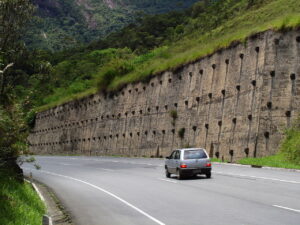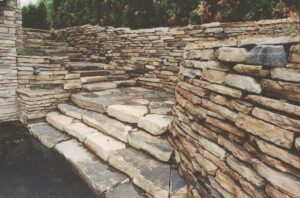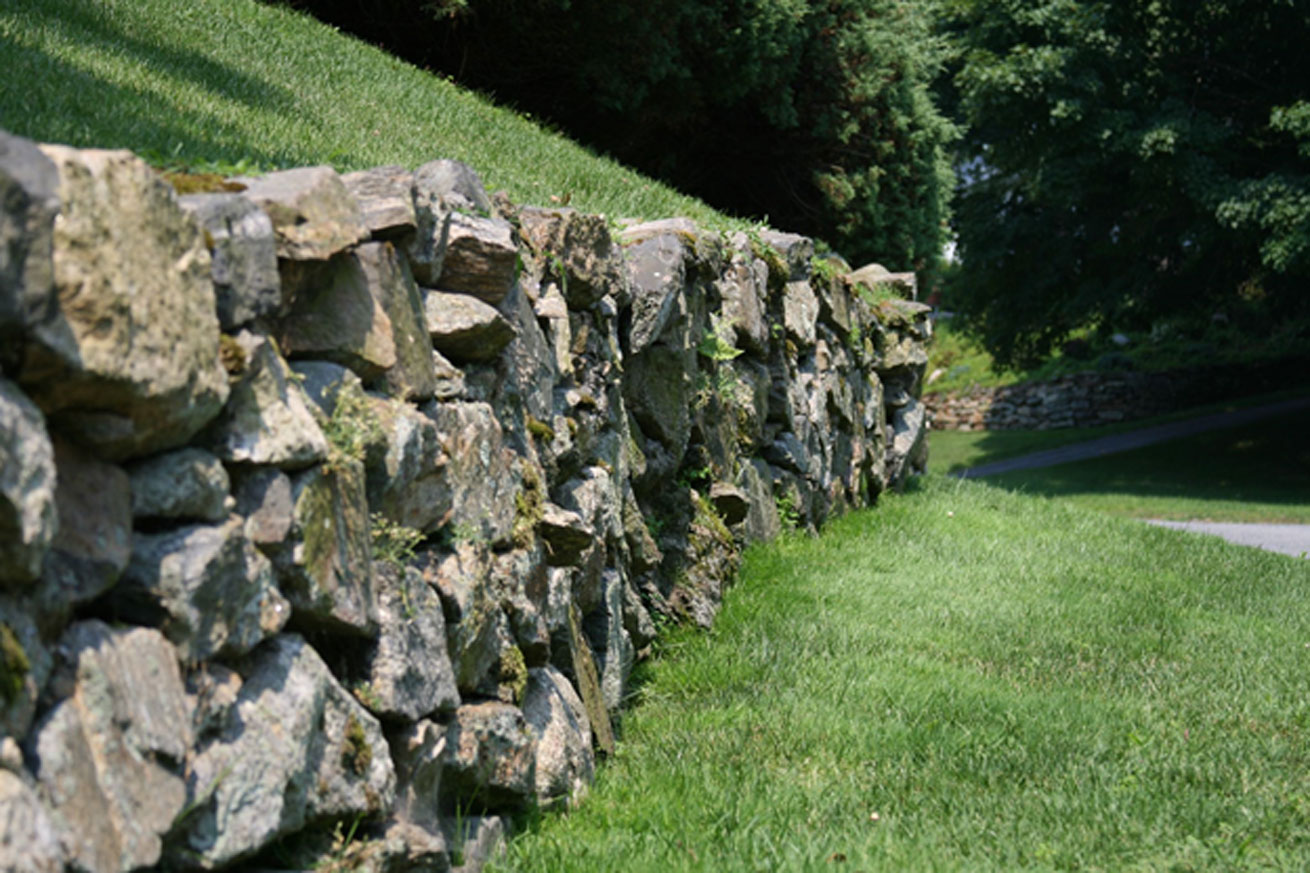Retaining walls are essential for managing slopes and preventing erosion. They add functionality and aesthetic appeal to landscapes. Here are some of the most common types of retaining walls:
1. Gravity Retaining Walls
Gravity retaining walls rely on their mass and weight to hold back soil. They are typically made of heavy materials like stone, concrete, or brick.
- Advantages: Simple to construct, durable, and can be built to various heights.
- Applications: Ideal for small to medium-sized walls in residential or garden settings.
2. Cantilever Retaining Walls
Cantilever retaining walls are made of reinforced concrete with a T-shaped or L-shaped base. The weight of the backfill helps stabilize the wall.
- Advantages: Strong and can support taller walls.
- Applications: Suitable for highways, bridges, and large commercial projects.
3. Sheet Pile Retaining Walls
Sheet pile walls are constructed by driving prefabricated sheets of steel, vinyl, or wood into the ground.
- Advantages: Efficient for tight spaces and effective in soft soil conditions.
- Applications: Commonly used in waterfronts, temporary construction sites, and urban areas.
4. Anchored Retaining Walls
Anchored retaining walls are supported by anchors driven into the ground behind the wall and attached with cables or rods.
- Advantages: Provides additional support and can be used for very tall walls.
- Applications: Ideal for deep excavation sites, bridges, and high-load areas.

5. Gabion Retaining Walls
Gabion walls are made of wire baskets filled with rocks or stones. They are flexible and permeable.
- Advantages: Environmentally friendly, permeable to water, and can blend naturally with the landscape.
- Applications: Used in erosion control, landscaping, and road projects.
6. Crib Retaining Walls
Crib walls consist of interlocking concrete or timber cells filled with crushed stone or soil. They rely on gravity and the weight of the infill.
- Advantages: Quick to install and good for moderate heights.
- Applications: Used in residential landscaping and small road projects.
7. Dry Stone Retaining Walls
Dry stone walls are built without mortar, using interlocking stones. They rely on the skillful placement of stones for stability.
- Advantages: Natural appearance, flexible, and durable.
- Applications: Ideal for gardens, terraces, and rural settings.

8. Segmental Retaining Walls
Segmental retaining walls are made of interlocking concrete blocks. They are designed to be stacked without mortar.
- Advantages: Easy to install, flexible, and can be used for various heights.
- Applications: Suitable for residential landscaping, garden walls, and small commercial projects.
9. Hybrid Retaining Walls
Hybrid walls combine elements of different types, such as a gabion wall with a concrete foundation or a segmental wall with geogrid reinforcement.
- Advantages: Tailored solutions for specific site conditions and requirements.
- Applications: Versatile for both residential and commercial projects.
Choosing the Right Retaining Wall
Selecting the right type of retaining wall depends on several factors:
- Height of the Wall: Taller walls require more robust solutions like cantilever or anchored walls.
- Soil Conditions: Soft or loose soil may need sheet pile or anchored walls.
- Aesthetic Preferences: Consider the visual impact and how the wall will integrate with the surrounding landscape.
- Budget: Material and construction costs vary significantly between different types of walls.
- Environmental Impact: Some walls, like gabion or dry stone walls, offer environmentally friendly options.
Contact us today for a free estimate at
(857) 504-5117 or email us at
contact@greenpulselandscaping.com to schedule a consultation and learn how we can help you achieve a lush, green lawn.
Click to Call Us!



